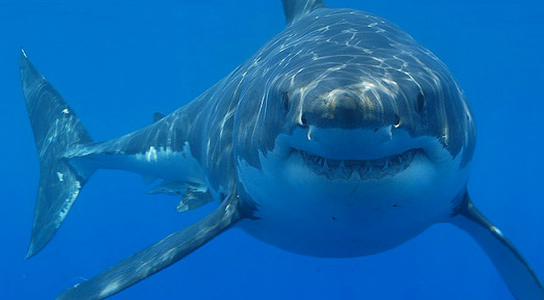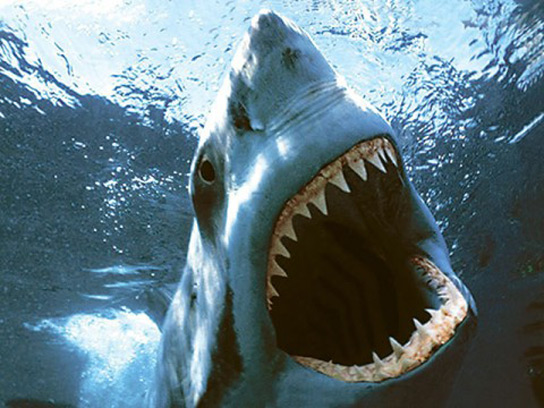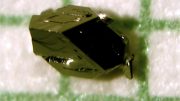
The large portions of the brain in great white sharks associated with visual input suggest they may be highly responsive to repellents targeting visual cues. Credit: Hermanus Backpackers/Flickr
Structures in the brains of great sharks are similar to the ones found in humans, and these could be the key to prevent further shark attacks. Animal biologists at the University of Western Australia have discovered that the brains of Carcharodon carcharias have similarities in terms of the regions that are dedicated to visual input to those found in human brains.
The scientists published their findings in the journal Brain, Behavior and Evolution. Larger optic tecta in the brains of sharks are similar to the superior colliculus structure in human brains. These regions deal with behavior in relation to visible objects, and are associated with an increased reliance on vision in C. carcharias. Great white sharks have large parts of their brains associated with visual input, meaning that they could be much more receptive to repellents targeting visual markers, states Kara Yopak, a research associate and co-author.

Current shark-repellent technology relies on non-visual deterrents, such as electrical pulses and chemicals. Understanding how C. carcharias‘ brains work, particularly how they utilize visual stimuli, could lead to more efficient and more targeted repellent products.
For example, a shark may recognize a poisonous sea snake’s markings, and swim away. This information could be used to repel sharks.
Reference: “Allometric Scaling of the Optic Tectum in Cartilaginous Fishes” by K. E. Yopak and T. J. Lisney, September 2012, Brain, Behavior and Evolution.
DOI: 10.1159/000339875









Be the first to comment on "Visual Repellants May Help Prevent Shark Attacks"